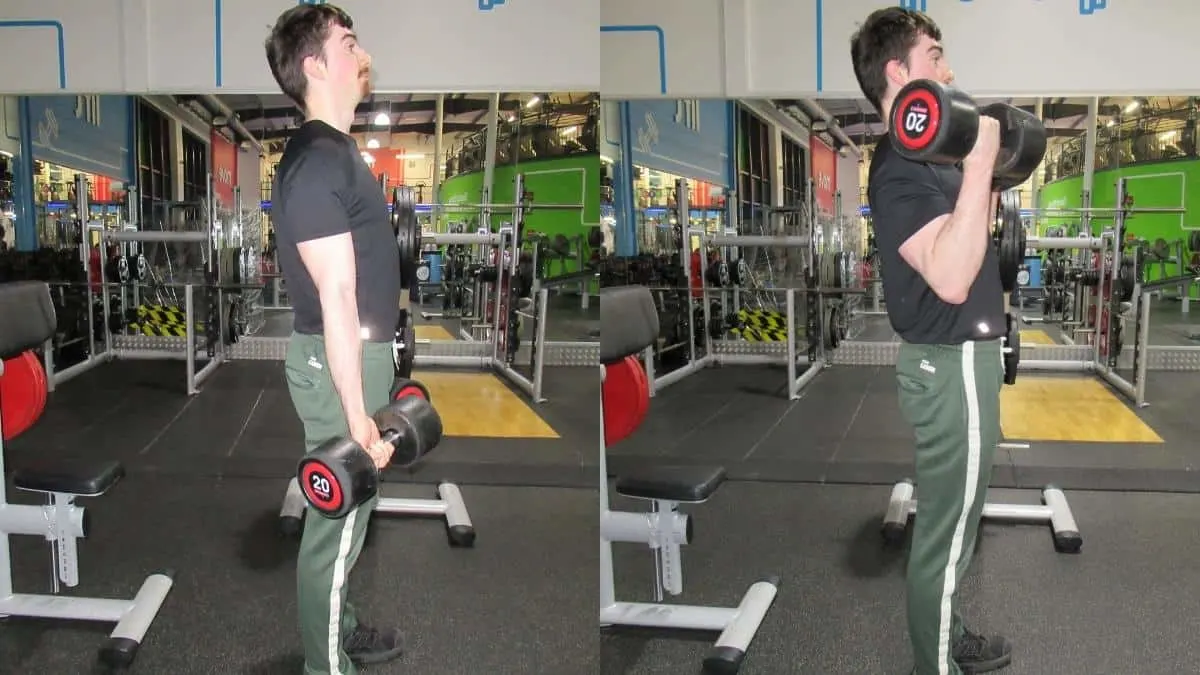Are 20 kg bicep curls challenging enough to build muscle? Also, how much should you curl?
We set out to answer these questions by using real-life case studies of people who can actually curl 20 kg dumbbells.
As you’ll soon see, curling 20 kg for reps can lead to the development of some very impressive biceps muscles.
See How Your Curl Compares:
- 10 kg bicep curl
- 30 kg bicep curl
- 40 kg bicep curl
- 50 kg bicep curl
- 60 kg bicep curl
- 70 kg bicep curl
- 100 kg bicep curl
Is a 20 kg bicep curl good?
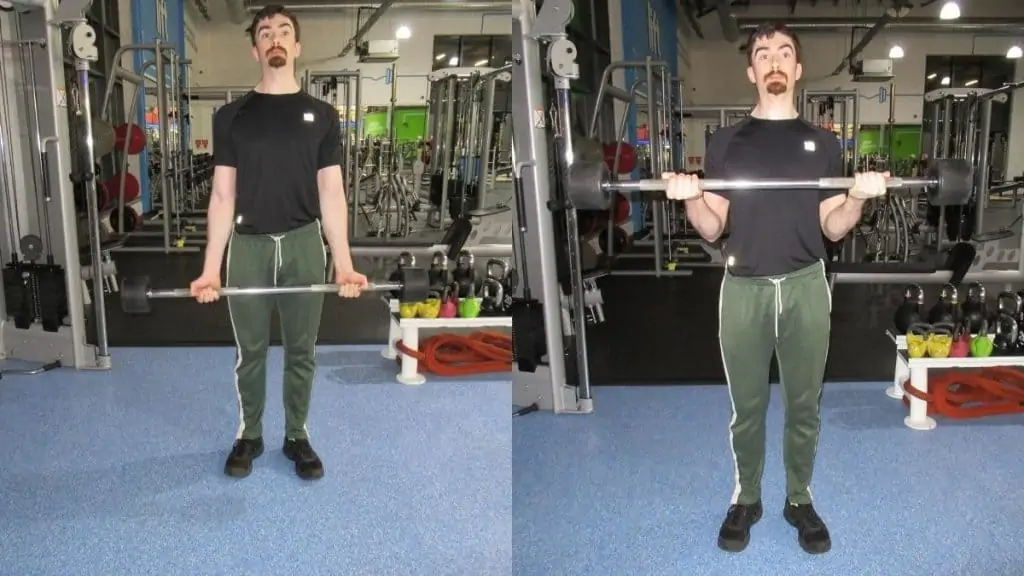
Is a 20 kg bicep curl good for building muscle?
Yes, a 20 kg bicep curl is a very good lift that can lead to impressively developed bicep muscles.
Curling 20 kg in each hand for multiple reps is highly challenging for the vast majority of lifters and will lead to noticeable hypertrophy when you use good technique.
Of course, the more reps and sets that you perform, the more growth that you’ll experience from your 20 kg dumbbell curls.
Still, performing even a few reps per hand with 20 kilogram dumbbells is impressive because the biceps are a relatively small muscle group.
Is a 20 kg barbell curl any good?
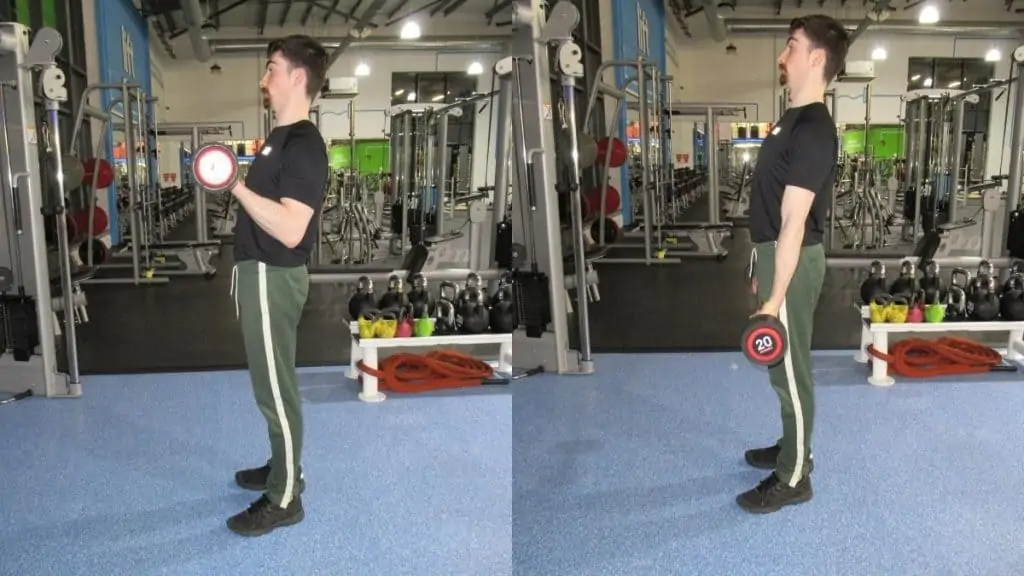
20 kg is the weight of an unloaded Olympic barbell, so you might not think that a 20 kg barbell curl is particularly impressive.
However, if you’re a novice lifter or are performing very high reps, then 20 kg barbell curls can actually be a viable way to build your biceps.
Performing a full range of motion and achieving an intense peak contraction is more important (for hypertrophy) than throwing around heavy weights. In other words, you want to train your biceps and not your ego.
Of course, curling 20 kg with a barbell doesn’t present enough challenge for everyone.
But if you’re up for a challenge, try doing 3 sets of 30 with 20 kg. I’ll bet that in most cases, your biceps will be on fire.
Is a 25 kg bicep curl impressive?
Yes, a 25 kg bicep curl—even if it’s only for one rep—is very impressive indeed.
I am, of course, talking about a 25 kg dumbbell curl.
If you can dumbbell curl 25 kg for multiple reps with good technique, then you probably have some very well-developed biceps.
At the same time, however, there’s no rule that says you need to curl 25 kg in order to build fantastic biceps. I’m not kidding when I say that you can build better biceps than 90% of gym-goers by lifting weights that are half as light!
The biceps love it when you lift with strict form because strict technique means that they get all of the muscle-building tension.
Will 18 kg dumbbell curls get results?
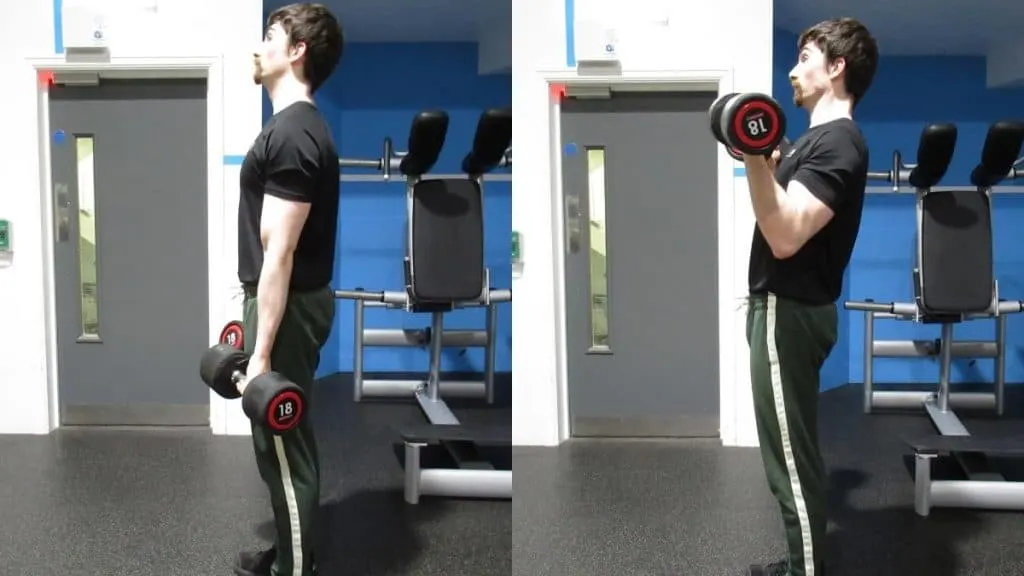
If you don’t have access to 20 kg dumbbells or can only curl 18 kg, then you can definitely still build your biceps and gain plenty of size.
Your biceps, after all, can’t read the number on the side of the dumbbells (in other words, they just respond to the tension that you put them under).
For a muscle group as small as the biceps, 18 kg dumbbell curls are actually pretty good if you’re using good form and doing 6 or more reps per arm.
On the other hand, you don’t even need to curl 18 kg to get excellent results. 18 kilograms is actually fairly heavy for the biceps, so you can definitely make gains by lifting a lot less, especially if your form is on point (no swinging or leaning back).
20 kg bicep curl case studies
Learn the kind of biceps development that you can achieve by curling 20 kg with good muscle-building form.
Case study 1: Nikhil Nautiyal Fitness
One thing that you’ll notice about most lifters with good biceps is that they always curl with good form.
Nikhil Nautiyal is one of those people.
You can see that he intensely focuses on each of his biceps as he lifts the weight up so that he can experience the strongest possible peak contraction.
Additionally, he lowers the weight all the way down so that his biceps get a strong, growth-stimulating stretch.
If you can replicate this form with 20 kg dumbbells, then you’ll have some very muscular biceps indeed.
Case study 2: Stefan Haager
We featured Stefan Haager in one of our other articles, and this time he’s back curling 20 kilogram dumbbells.
Stefan, who is, quite frankly, absolutely jacked, demonstrates an excellent way to make 20 kg curls even more challenging.
He starts with regular 20 kg curls and then moves straight into 20 kg hammer curls (which are easier). This is a great way to prolong your set in order to get a better pump and accumulate more training volume once you reach failure on supinated curls.
Taken even further, you could start with reverse curls (hardest), move onto bicep curls, and then finish with hammer curls (easiest)
Case study 3: Masked Bodybuilder
The man who operates the YouTube channel Masked Bodybuilder knows how to get the most from his curls.
If you don’t feel like lifting heavy or doing multiple sets, why not challenge your biceps with one 50 rep set instead?
This guy blasted his biceps with 20 kg barbell curls and reported that he got a crazy pump. It just goes to show that high reps and intense training can work wonders for building the biceps.
If you’re up for it, see how many reps you can do with 20 kg. It’s always good to test your muscular endurance as well as your max strength because having good endurance can help you to perform more sets.
Conclusion: Is a 20 kg dumbbell curl a good lift?
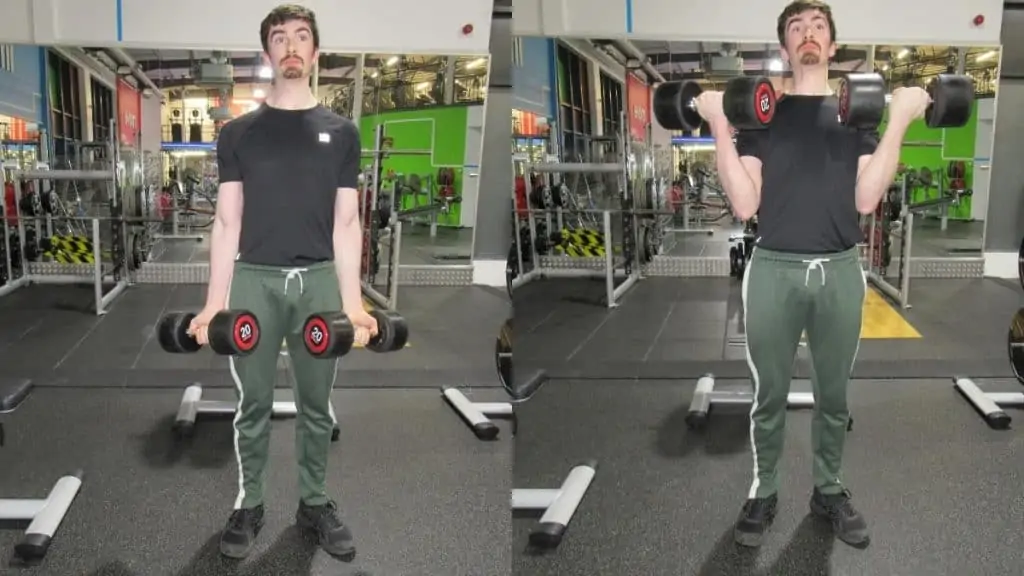
While you might see some people curling 20 kg dumbbells in the gym, few lifters can curl 20 kg multiple times with the optimal form.
That’s because a 20 kg bicep curl, when performed correctly, is a genuinely impressive lift.
It’s entirely possible to build bulging biceps without ever curling more than 20kg. So don’t feel bad if you can’t curl 20 kg or can only lift that amount of weight for a few hard-earned reps.
What matters the most is that you’re subjecting your biceps to plenty of tension (but not so much that you can’t recover) so that they have a reason to grow bigger and stronger.
References
- Kwon, Y., & Kravitz, L. (2004). How Do Muscles Grow? Unm.Edu. https://www.unm.edu/%7Elkravitz/Article%20folder/musclesgrowLK.html
- Nunes, J. P., Schoenfeld, B. J., Nakamura, M., Ribeiro, A. S., Cunha, P. M., & Cyrino, E. S. (2020). Does stretch training induce muscle hypertrophy in humans? A review of the literature. Clinical Physiology and Functional Imaging, 40(3), 148–156. https://doi.org/10.1111/cpf.12622

